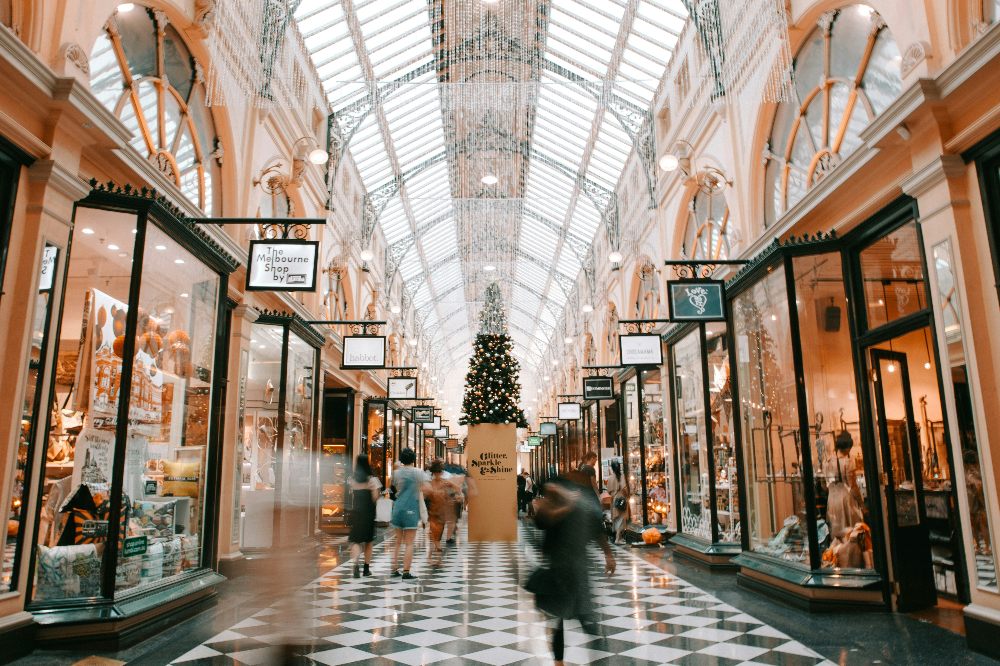
Despite weather and rail disruptions together with the challenging economic conditions, December witnessed a surge in footfall of +6.1% from the month before in all UK retail destinations. This increase was predominantly boosted by the fourth week of the month, the final trading week before Christmas day, with footfall rising by +11.2% across all UK retail destinations.
Footfall across UK retail destinations rose by +6.1% from November to December
Shopping centres led the charge with a rise in footfall of +11.1% in December from November followed by retail parks (+5.9%) and high streets (+3.7%). In comparison to 2022, footfall rose marginally by +0.2% across all UK retail destinations. However, this was largely driven by activity in high streets, where footfall rose by +1.2% versus a modest rise of +0.1% in retail parks. Shopping centres, meanwhile, witnessed a decline of -1.9%. This suggests that the investment made by many historic and market towns in festive events and attractions was worthwhile in driving footfall during the Golden Quarter.
The month of December witnessed an improvement in footfall performance from the 2019 level as it narrowed to -10.4% across all UK retail destinations, which was the second-best result recorded for the year following June’s result when it was -8.6% lower than 2019. In high streets this narrowed to -11.4% from -12.6% in the month before, shopping centres witnessed an improvement to -16.7% from -17.1% in November, and retail parks also noticed this improve to -1.5% from -2.2% in the month prior.
Boxing Day and beyond
The week between Christmas and New Year tends to follow a historical trend of lower footfall from the week before. In 2023, Boxing Day footfall was +4% higher than Boxing Day 2022, primarily driven by high streets (+8.8%), whereas retail parks and shopping centres both experienced a year-on-year decline of -1%. Despite the increase, footfall on Boxing Day remained -14.9% lower than 2019 levels, indicating continued travel or the growing trend to use this day to shop online, which may have even started as soon as Christmas Day.
With so many retailers and outlets going into ‘sale’ from Black Friday, the opportunity for further reductions during Boxing Day and beyond is likely to have lessened. This, together with the ongoing tightening of spend as a result of the increased cost of living, could account for these lower footfall figures.
Central London witnessed the most notable uplift in footfall year-on-year on Boxing Day (+10.6%) and observed a +1.6% rise in activity compared to 2019. Throughout the week, footfall levels continued to rise from 2022 levels across historic, market and coastal town types. Much of the rise witnessed in and around London was driven by activity in the West End (+7.6%) and Central London (+5.7%). This suggests that many are likely to have ventured out to make the most of the festive events and attractions.
Looking ahead to January and 2024
Looking ahead to January, a natural post-Christmas slump is anticipated, with footfall projected to decline in the region of -20% to -25%. Weather warnings and a one-week delay in the return to school for many regions across the UK may also lead to subdued footfall at the start of the month.
However, the forecast is that this should improve as the month progresses compared to 2023 levels, particularly with more and more employees returning to offices. The financial constraints felt in the latter part of 2023 for many consumers are likely to continue into the early part of 2024, which may also impact footfall in UK retail destinations.











